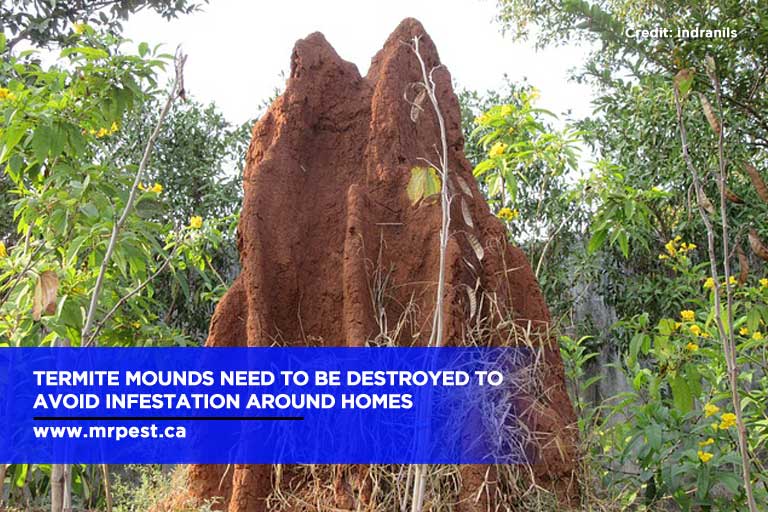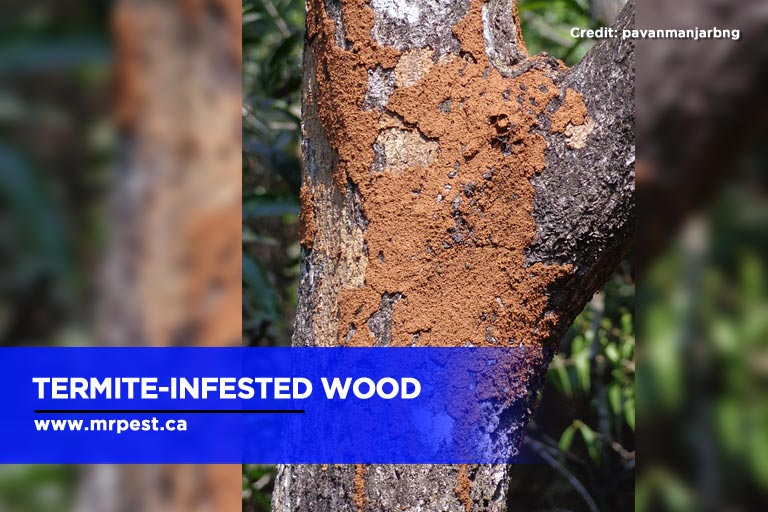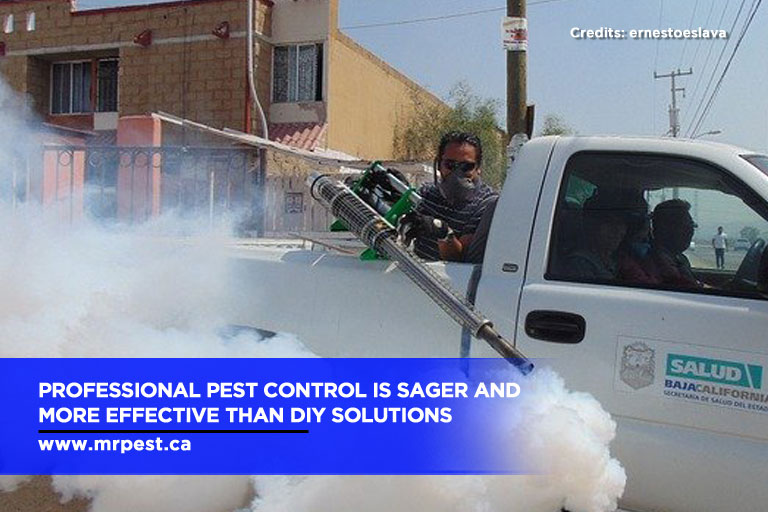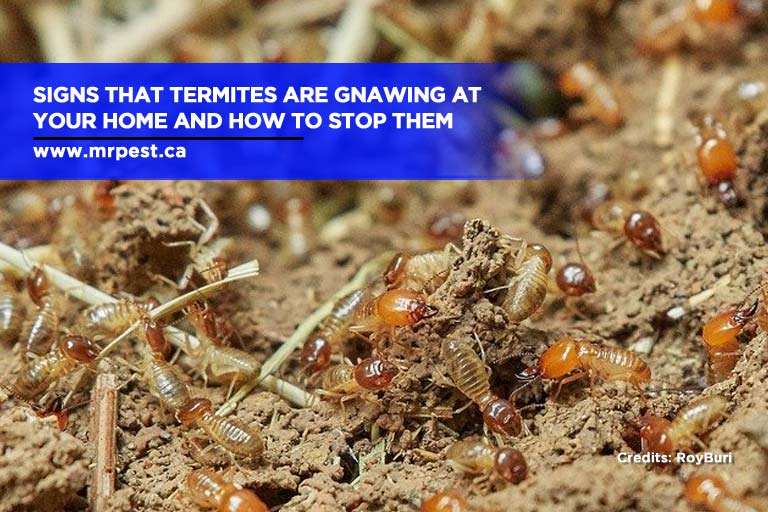Termite infestations have been giving homeowners headaches — probaby for as long as people have used wood for housing. Termites can compromise the stability of structures, like homes and buildings. Destruction can range from minor ones (furniture or home fixtures that can be easily replaced) to major ones (structural damage that will take thousands of dollars to replace or repair).
If you suspect that your home is being infested with termites, it’s a good idea to double check. Below are the signs you need to look for so that you can take the appropriate measures to protect your home.
What Are Termites?
A termite is an insect that feeds on and destroys wood. Although there are some who mistake them for white ants since they come in swarms, they are far from it.
Termites can be classified into three types:
- Damp wood – Damp wood termites live in forested areas.
- Subterranean – Subterranean termites live in the soil where they get a moist environment.
- Dry wood – Dry wood termites on the other hand are found in really dry wood.
What Are the Signs of a Termite Infestation?
This insect is most observably active in early spring. Each year, billions of dollars in damage are recorded by experts solely because of these tiny insects. If you are wondering whether you may be dealing with an invasion, here are tell-tale signs that you need to look for:
- Swarmers – Termites are most observably active during the spring. Around this time, the established termite nests send alates, or flying termites, to start new colonies. Use this time to figure out if your neighborhood is termite-infested. Look around and check the spider webs in your property. If you find a web with a termite, it’s possible that there is a larger-scale termite activity in your home. Be proactive and start eliminating the threat before they can do any damage.
- Termite cement – Termites typically start building their homes by sealing small cracks, holes, crevices, and gaps with mud, also called termite “cement”. They do this to reduce air flow and keep their covered sanctuary moist. If you notice these around your home’s foundation, then it is likely that the little destroyers are just waiting to attack.

- Termite tubes – As destructive as they can be, termites are actually fragile insects which means that they don’t have any defense against predators. They protect themselves by seeking cover inside a piece of wood, going underground, building small tunnels made of mud, building a cellulose, or building tubes.
Termite tubes are often the work of subterranean termites. These tubes extend from the ground, snaking on the surface of the infested wood. Search and inspect the foundation of your home to check for the presence of any tube. If you find any in your property, determine whether these tubes are active or are part of old infestations. Remove a small section and check again after a few days. If it’s an active infestation, this will be repaired in a few days. Other possible locations for termite tubes are around water pipes, in the attic, in the basement, and in crawl spaces.

- Damaged wood – It can be difficult to determine if termites have begun to wreak havoc in your home until the infestation has reached the advanced stage. However, there is a way to detect their presence early. Check by tapping pieces of wood. Termites in wood will leave it hollow. Listen for a hollow, flat, or dull sound which can indicate termite damage. Another way to tell damage is to look at the wood itself. Damaged wood looks ridged from all the gnawing termites do.
- Frass or Droppings – Like every living thing, termites also leave excrement to remove moisture from their bodies. Look out for hard pellet-like feces piled up on some opening.
- Warped doors or stiff windows – Subterranean termites are attracted to moisture which is why they prefer to nest in doors or windows, warping them. While warping can be a result of temperature or climate changes, it can also be the termites eating away at the wood.
- Clicking sounds – Do you sometimes hear clicking sounds around your house? Termites chew with open mouths and when they are stimulated by certain vibrations, the chewing gets louder and louder like the sound of scissors snipping. You can put your ear to a piece of wood and check for these sounds.
How Do I Deal with Termites?
The fight against termites can be divided into three parts: before, during, and after the infestation Here are some steps to help you deal with these little destroyers:
- Before a Termite Infestation
Before a home or structure is built, termite prevention planning should be taken. One of the things experts advise is the use of Basaltic Termite Barrier. This made of packed rock particles installed underneath a house to prevent termites from entering. Other options are installing termite meshes, pouring concrete foundations, and brick and block foundations with solid concrete.
Existing homes can still be made termite-free by reducing the soil-to-wood contact. Experts suggest removing all lumber, plants, paper, wood, cardboard, and other materials that termites could live on and eat.

- During a Termite Infestation
If you are certain that there is a termite infestation in your home, hand the work to the experts. One of the common mistakes property owners make is relying on do-it-yourself remedies which do not guarantee success. Experts, on the other hand, are more knowledgeable about the behavior of these pests and are equipped with the chemicals and tools that will make dealing with termite colonies easier and more effective.
Typically, these professionals would be using specialized equipment which may include masonry drills, spray tanks, and metal rods for injecting soil. Pest control specialists know how liquid pesticide can be safely injected to soil so that the health risks to people, animals, and plants are minimal.
- After a Termite Infestation
Experts recommend replacing all wooden parts of the house to keep termites at bay. It is also ideal to continually ask for professional help to make sure that the mites would never return. A follow-up and maintenance even just once a year would be a good way to totally eradicate the termites in your property.
If you believe that your home or property in Barrie, Orilla, or Toronto has termite problems, turn to a pest control professional. Mr. Pest Control offers home pest control services to protect your home from these critters. Talk to one of our professionals now.


